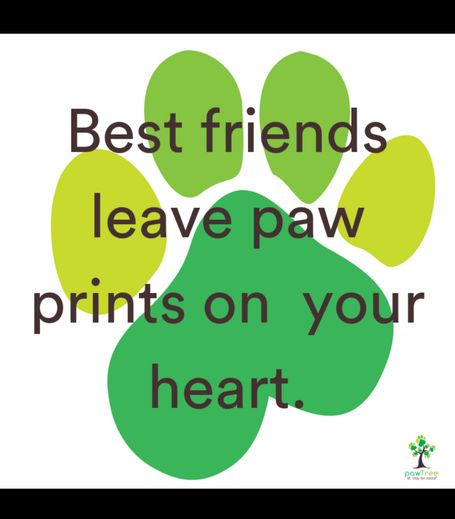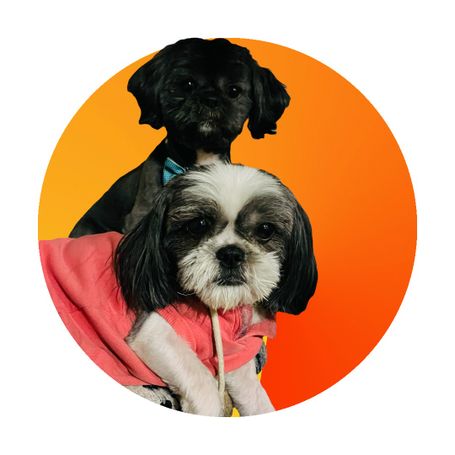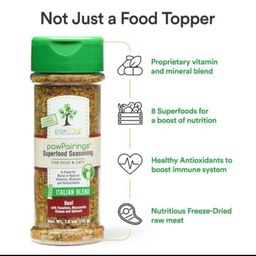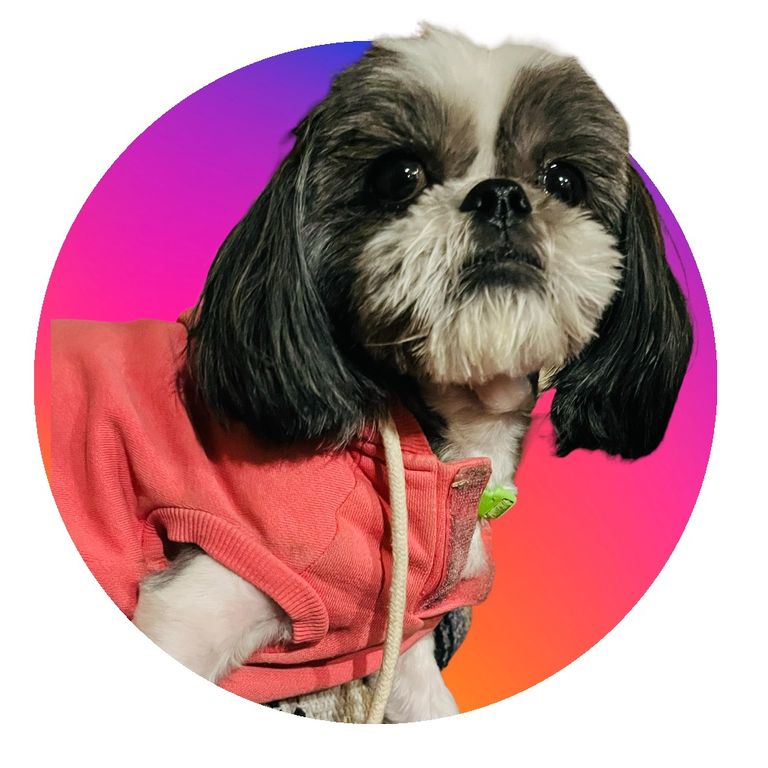
My Shih Tzu is NOT spoiled...
just WELL TRAINED.
Shih Tzu Breed Information
Things every Shih Tzu owner should know.
That face! Those big dark eyes looking up at you with that sweet expression! It's no surprise that Shih Tzu owners have been so delighted with this little 'Lion Dog' for a thousand years. Where Shih Tzu go, giggles and mischief follow. Shih Tzu (pronounced in the West 'sheed-zoo' or 'sheet-su'; the Chinese say 'sher-zer'), weighing between nine (9) to sixteen (16) pounds, and standing between eight (8) and eleven (11) inches, are surprisingly solid for dogs their size. The coat, which comes in many colors, is worth the time you will put into it'; few dogs are as beautiful as a well-groomed Shih Tzu. Being cute is a way of life for this lively charmer. The Shih Tzu is known to be especially affectionate with children. As a small dog bred to spend most of their day inside royal palaces, they make a great pet if you live in an apartment or lack a big backyard. Some dogs live to dig holes and chase cats, but a Shih Tzu's idea of fun is sitting in your lap acting adorable as you try to watch TV.
HISTORY
The Shih Tzu originated in Tibet, probably back around the 7th century, and they may have simply been the smallest of the Lhasa Apsos there. Given as gifts to the Chinese emperors, the breed developed into the dog we recognize today. Fanciers speculate about crosses with Pekingese to shorten the face as well as selection for the smaller Lhasa-type dogs. The name Shih Tzu means "lion dog" in Chinese, which further confuses the ancestry because lion dog usually denotes the Pekingese.
The Chinese royalty kept and bred Shih Tzu and, when the British arrived, the breed made its way to England and then on to the United States. Unfortunately, the Communist takeover in China wiped out most of the native stock.
No one disputes that these charming little dogs were intended as companion dogs. Their primary function right from the start appears to be acting as delightful company.
PERSONALITY
Shih Tzu are renowned for their perky, happy temperaments. They are lively and friendly, but like people, they have emotions and no Issue showing it. Shih Tzu tend to get along well with people of all ages and with other dogs as well as other pets of different species. Rarely you will find a snippy Shih Tzu, but most are very sweet.
With their short muzzles, Shih Tzu are not big chewers, but they do enjoy digging and some indulge in nuisance barking. They have a big desire to be with people, whether that is sitting on your lap or taking a hike through the park.
LIVING WITH
Shih Tzu are very easy to keep and quickly become obese if given too many treats. They do not need or want a mile hike every day, but they do enjoy walks and should be kept fit. Shih Tzu do compete in obedience and agility with some success. Beware of exercising a Shih Tzu in hot, humid weather with the short muzzle, the breed is prone to heat stroke.
Hair is a four-letter word when it comes to the Shih Tzu. Most pet owners resort to a short year-round body clip, which looks quite nice and is very easy to care for. If you wish to keep the long flowing coat, you must be prepared for some serious grooming time. These dogs require weekly baths with oiling of the coat to help keep matting down and daily grooming to keep any foreign objects from catching in the coat. Dogs with the correct texture of coat do not mat nearly as much as those with a soft coat.
The Shih Tzu tends to require a large amount of personal attention each day. They thrive on human company and can easily become spoiled. They enjoy training and learning tricks, making them the center of attention. Shih Tzu should be socialized to children early on, but they enjoy people of all ages. Do not count on your Shih Tzu to guard the house; he would probably welcome a burglar with open paws.
Resource: AKC & Hill's Pet
Shih Tzu at a Glance
The Shih Tzu is often slightly longer than tall, with a sturdy body and a good-sized head. The muzzle is quite short, with an undershot bite. The head is rounded and the eyes are quite prominent. The tail is carried gaily curled up over the back. The gait is long and swift for such a small dog.
The Shih Tzu is covered with luxuriant, long, straight hair. This double coat does require a fair amount of upkeep, especially if left long on these short dogs so that it sweeps the ground. Any color is acceptable for the coat, but dark pigment is preferred around the eyes and on the nose. Shih Tzu tend to be fairly hardy little dogs and often live to fourteen (14) or fifteen(15) years of age.
Coat
Length: Long
Characteristics: Straight
Colors: Any color permissible
Overall Grooming Needs: High
To maintain the Shih Tzu's long flowing coat, the owner must be prepared for serious grooming time.
Size
Weight Range:
Male: 9-16 lbs.
Female: 9-16 lbs.
Height at Withers:
Male: 10 in.
Female: 10 in.
Expectations
Exercise Requirements: <20 minutes/day
Energy Level: Average
Longevity Range: 11-14 yrs.
Tendency to Drool: Low Tendency to Snore: Low
Tendency to Bark: High
Tendency to Dig: Moderate Social/Attention Needs: High
Summary
Shih Tzu are classified in the toy group in most countries, with a height of eight (8) to eleven (11) inches and weight of nine (9) to sixteen (16) pounds (four to seven kilograms).
As with most toy breeds, Shih Tzu are quick to mature, reaching adult size by about 10 months.
Features
Brachycephalic (squashed face), floppy ears (naturally)
Bred For
Lapdog
Club Recognition
AKC Classification: Toy
UKC Classification: Companion Dog
Prevalence: Common
Common Shih Tzu Breed Health Issues
Health Problems
Allergies and skin conditions
Shih Tzu owners need to be aware that the breed is sensitive to allergens and tends to develop allergies that present with itchiness, skin irritations and dermatitis. It is recommended to keep an eye on your dog’s skin health at all times.
Some allergies can be well managed with regular preventatives, a specific diet and/or medicated shampoos or foams. As there are a variety of things that could cause a dog to have skin problems, it’s had to prevent them all before they occur as each dog will react differently to everything in their environment.
Ear problems
Like many dogs with floppy ears, the Shih Tzu, is very susceptible to ear infections. These can be triggered by allergies, underlying diseases, or by simply too much moisture in the ear canal so some ear infections are preventable while others an underlying cause might not be easily identified.
Cleaning your dog’s ears regularly can help prevent some of the things that would then lead to an infection but also allow you to check the interior of the ear for any signs of a problem.
Breathing problems
Brachycephalic Obstructive Airway Syndrome (BOAS)
Like other short-headed (brachycephalic) breeds, Shih Tzus often have respiratory problems because of how their head, face and airways are shaped. Their upper airways are too narrow, which makes it hard for them to breathe.
Dog breeds with Brachycephalic Obstructive Airway Syndrome (BOAS) can have problems regulating their body temperature , so it is advisable to avoid walking them in high temperatures – instead try to walks your Shih Tzu in either the early morning or late evening when the air is cooler.
Also, BOAS can lead to secondary problems resulting from the increased demands on their heart and lungs, so over-exercising should be avoided wherever possible.
Moderate to severe cases have an immense impact on the animal’s wellbeing as it leaves them with a shortage in their oxygen supply and this becomes a relevant matter of animal welfare if left untreated. There are surgeries available to make the airways wider however efforts should be made to not breed dogs whose airways are too narrow to live comfortably.
Collapsing trachea
Another airway problem that can occur in the Shih Tzu is a collapsing trachea (windpipe). The cartilage that gives the trachea its shape can weaken and it will make the structure flatten. The dog’s breathing will become difficult and can become a relevant health risk. For severe cases, there is a corrective surgery available.
Eye problems
Cataracts
A Shih Tzu’s large and sensitive eyes can cause the breed to have issues with their sight and their genetics can also make these conditions more common than they might be in other breeds. A condition seen more frequently in Shih Tzus is cataracts, a hereditary disorder that causes the eye to cloud over which can significantly affect your dog’s vision.
This condition can also develop as a dog ages or as a result of another health condition but the symptoms remain the same. Common signs include:
- Cloudiness of the eye(s)
- Excessive discharge from the eye
- Sensitivity to bright lights
- Pain caused by the underlying cause
- Loss of vision
You should always contact your vet if your pet shows any of these symptoms so they are able to receive the right treatment.
Progressive Retinal Atrophy
Progressive Retinal Atrophy is a degenerative disease that affects the cells in the retina which eventually leads to blindness. It is a genetic condition that has no external triggers, effective preventative measures or treatment so helping your dog adapt to a life without vision is the best thing to do once they have been diagnosed.
Dry Eye and Entropion
Other eye disorders to look out for in a Shih Tzu are “Dry Eye” (Keratoconjunctivitis sicca, KCS) and entropion, which is when the eyelids turn in towards the eye. Both conditions bring damage to the cornea and can lead to ulcerations on the eye.
Eye Injuries
Another thing to respect is the sheer position and size of the Shih Tzu’s eyes and how they sit in the eye sockets. For one thing, their bulging eyes are more prone to injury and sometimes proper eyelid closure isn’t possible due to the anatomy of the Shi Tzus eyes.
This again leaves their eyes more vulnerable so bear this in mind while out on walks as you’ll be able to help prevent some injuries to the eye by making sure they stick to the path.
Proptosis
Another unfortunately common condition in the Shih Tzu is something called proptosis. This is the dislodging of the eyeball out its socket and the eyelids closing behind it. When this happens, this is an absolute emergency and needs to be seen by a vet immediately.
Joint problems
Hip Dysplasia
Hip Dysplasia is a common and painful genetic health problem seen in Shih Tzus. This condition occurs when a dog’s hip joints develop abnormally which can have different indications depending on the severity.
The only way to prevent this condition is to make sure a dog’s with hip dysplasia are not bred from, with various tests able to determine a dog’s hip health before an owner makes the decision to breed.
Luxating Patella
A luxating patella occurs when the kneecap slips out of its normal position in the groove of the thigh bone. It’s considered to be an inherited condition in small and toy dogs and so it’s prevented with responsible breeding. It can also be caused as a result of an injury so if your dog does develop a luxating patella, it’s often not preventable.
Hormonal problems
Hypothyroidism
One of the hormonal diseases that are often found in Shih Tzus is called hypothyroidism. It affects the thyroid gland of the dog and results in a lack of thyroxine, a hormone that controls the metabolism of the dog. Signs of this disease are hair loss, dull and thin coat, blackened areas of skin, lethargy, less keen to exercise and weight gain.
This disease shouldn’t be left untreated as it affects the dog’s quality of life. Dogs diagnosed with this condition will need to take oral medication for the rest of their lives.
Cushing’s Disease
Cushing’s Disease is a condition caused by a tumour on either one of two important glands found on the base of the brain which results in the production of too much of the stress hormone cortisol. Sometimes it can be difficult to diagnose the condition as its symptoms can be mild but once diagnosed, the vet will work on a treatment depending on the severity of the condition.
Liver problems
Portosystemic Shunt
The Shih Tzu is more likely than other breeds to have a liver disorder called portosystemic shunt (PSS). This condition might also be referred to as a liver shunt and means that the blood that usually enters the liver (to filter out any toxins) bypasses the liver via an abnormal connection or vein. This can cause serious problems like stunted growth because of a lack of the necessary energy needed for proper development.
Surgery is often needed to close the shunt but your dog will need to be stabilised before they receive this treatment. Sometimes, medication and diet can help ease the symptoms.
Resource: Animal Friends Pet Insurance
22 Reasons Why pawTree's Dog
WHAT WE DO HAVE:
• Customized nutrition plans
• Natural and holistic recipes
• Real meat, poultry or fish as the first ingredient
• High-quality protein
• Antioxidant-rich formulas to help support a healthy immune system
• Prebiotics to support a healthy digestive tract
• Taurine to support heart and eye health
• Omega-3 and Omega-6 fatty acids for healthy skin and coat
• Natural source of DHA to support healthy brain development
• Complete and balanced nutrition
• Formulated for reduced stool volume
• A good source of natural Glucosamine to help maintain joint health
• Balanced Calcium and Phosphorus for bone and tooth health
• Developed by Veterinarians and Nutritionists
• Made in the U.S.A
• 100% Satisfaction Guarantee
• 90 Day Money Back Guarantee / No Questions Asked
& Cat Food Is A Better Way
WHAT WE DON'T HAVE:
• No poultry by-products
• No corn, no wheat, no soy
• No added sugars or sweeteners
• No artificial colors, flavors or preservatives
• No grains in our grain-free recipes, and only healthy grains in our other recipe
Paws Up If Your Pet Has Any Of These Issues:
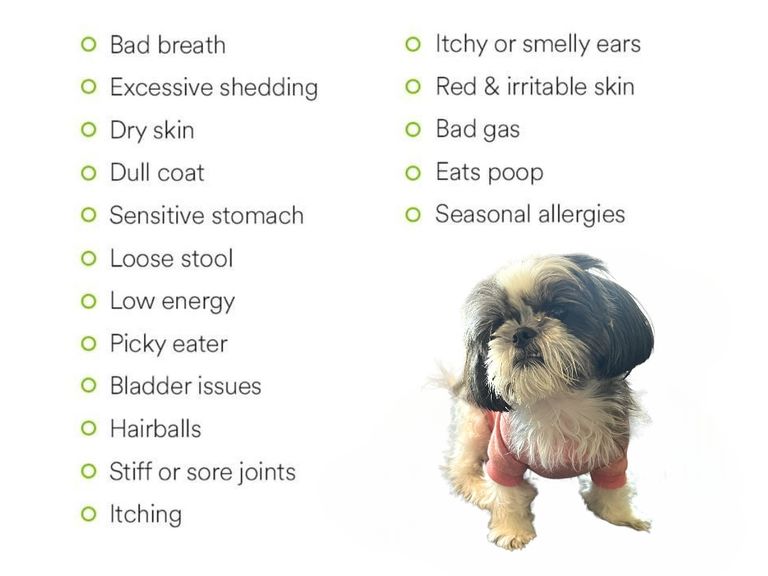
© Copyright. All rights reserved.
We need your consent to load the translations
We use a third-party service to translate the website content that may collect data about your activity. Please review the details in the privacy policy and accept the service to view the translations.
